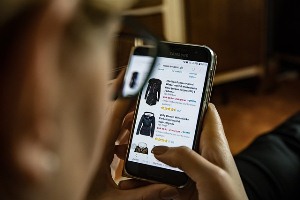Three lessons in enhancing the in-store experience

The booming age of ecommerce continues to create challenges for traditional bricks and mortar retailers. Does consumer appetite for next-day delivery and the ability to browse through hundreds of thousands of products render the traditional store obsolete?
The in-store shopping experience is still an essential part of the buying journey for many customers and still delivers value for retailers. However, the face of traditional retailing is changing, and a shop is no longer just a shop: it’s an opportunity for retailers to showcase their products and immerse the consumer in the brand experience, says Philip Hall, managing director Europe, CommerceHub.
The most forward thinking retailers are finding success by redefining the bricks and mortar experience. Here are three key lessons in how to enhance the bricks and mortar experience from some well-known UK retailers.
Immersive brand experiences
Customers don’t buy from a store, they buy from a brand. A physical space allows retailers to completely immerse customers in the brand, which in turn creates a strong sense of identity. Primark is a great example of this: its lack of an online channel doesn’t stop it from providing an experience, delivering trends and appealing to a wide range of consumers. The recent launch of Primark’s Birmingham store proved that the in-store shopping experience goes far beyond the checkout. From digital screens displaying video to a Disney Cafe, nail bars and hair salons, Primark is intent on keeping its customers in-store for as long as possible to build customer loyalty and brand recognition.
Primark has taken traditional bricks and mortar retailing and placed the emphasis on experiencing the brand as opposed to a commoditised, purely transactional shopping experience.
Excelling online

Philip Hall
On first glance, pure-play online retailers could be seen as completely opposite to traditional bricks and mortar brands. But when it comes to excelling in online experiences, Boohoo has more in common with Primark than just fast fashion. Their approach to ‘shopkeeping’ is very similar: Boohoo doesn’t have a store in which to immerse their customers, but their website and social media channels immerse their customers in the brand experience just the same.
Boohoo has also made huge investments in their products, keeping them on the frontline of seasonal trends, which helps to boost sales and keep the millennial audience adding to basket. Over the last 12 months, Boohoo added 70,000 styles across their brands and increased inclusivity by broadening size ranges and appeal. As a digital-native retailer appealing to digital-native consumers, Boohoo excels in the online experience.
Moving from clicks to bricks
For too long, online and in-store channels have been pitted against each other and siloed. This approach is outdated as there is no reason why online and in-store cannot work together. Argos is a great example of a retailer who has been able to make online and in-store work in tandem. When the company was founded, customer interactions were purely offline. In 2019, the story is very different with around 60% of all sales now starting online and 75% of sales coming through mobile devices.
Argos utilises physical space for the final step in the transaction and have demonstrated how a sale can move from clicks to bricks. Starting out as a traditional retailer hasn’t stemmed their innovation, and the retailer has been able to capitalise on both the online and in-store experience. Argos has remained open-minded and embraced a multi-channel, digital-first model while many retailers have failed to pivot and have paid the price.
Final thoughts
If there’s one key lesson to take from all of these retailers, it’s that they have remained innovative and excel across each channel on which they operate, be it in-store, online or both. Retailers who fail to adapt and keep up with the pace of change could find themselves in trouble.
The author of this blog is Philip Hall, managing director Europe, CommerceHub
Comment on this article below or via Twitter @IoTGN
